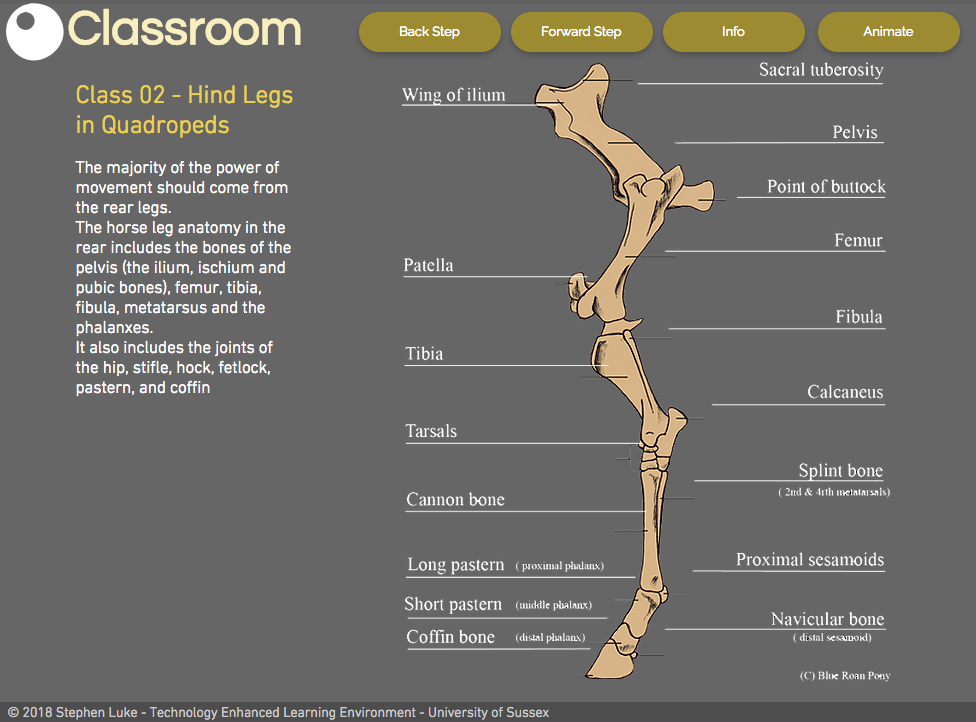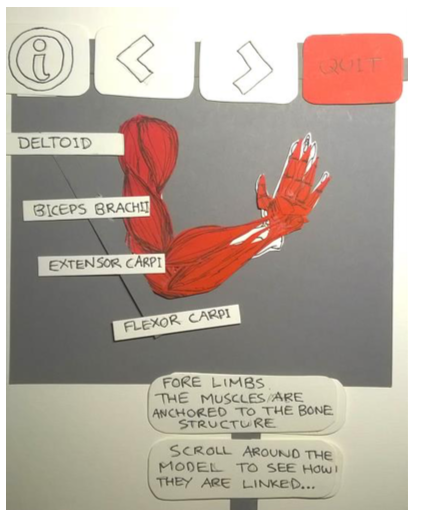Thankyou for reading this EE blog post this is representative at the time is was written.

Dr Lara Montesinos Coleman
This is a guest post by Dr Lara Montesinos Coleman (School of Global Studies).
Teaching staff in most schools and universities tend to have limited awareness of how a Specific Learning Difficulty (SpLD) can affect learning. There is particularly sparse literature on how to support academically gifted students who might choose to study at a university like Sussex. This article is intended as a basic guide for faculty on how to adapt our pedagogy to help these students flourish.
Students with disabilities often worry about asking for help or getting ‘special treatment’. However, the 2010 Equality Act gives universities a duty to anticipate the difficulties likely to be faced by people with disabilities and to make ‘reasonable adjustments’ to any practice that might put them at a disadvantage. At Sussex, the Student Support Unit recommend particular adjustments for students diagnosed with SpLDs. However, without an understanding of SpLDs and their implications for teaching and learning, it is difficult to know how to implement adjustments.
The good news is that pedagogy designed with students with SpLDs in mind can help all students make the most of their abilities, because it requires us to take into account different cognitive skills and think more about the ‘how’ of learning.
 What are SpLDs?
What are SpLDs?
SpLDs are neurological (not psychological) conditions that affect only specific aspects of learning. In assessment by an educational psychologist, someone with an SpLD might get an exceptionally high score for verbal reasoning – the aspect of intelligence that normally correlates with academic success. However, they would score far lower in other areas, such as those relating to the speed with which they can process information.
‘Working memory’ is one area commonly affected. It is well known that people with SpLDs like dyslexia and dyspraxia can struggle to visually process written text. What is less well known is that working memory has a big impact upon the speed at which a person can read. Likewise, someone with an SpLD might show deficits in reading comprehension when tested, because they have difficulty retaining the material. This does not mean that they have deficits in understanding. Indeed, the same person’s scores for reading comprehension can actually increase as the material gets more complex, as they have more conceptual ‘hooks’ to aid retention of information. Depending upon how a person is affected by an SpLD, they might actually fare far better reading a complex philosophical text, for instance, than a supposedly ‘easier’ textbook summary.
There can be positive aspects to having an SpLD. For example, people with SpLDs often show a ‘holistic’ thinking style and can be particularly good at drawing links between concepts and ideas. When students are given the encouragement to build on these skills, they often produce original, critical and creative work of an exceptionally high standard. Students who may have felt stigmatised at school are sometimes surprised to discover that many talented thinkers and writers have an SpLD – including many successful academics.
However, this does not mean that an SpLD is not immensely disabling. Many people develop excellent coping strategies, but the hidden burden of these can be exhausting. As faculty, we rarely get a glimpse of the extra work students with SpLDs may be having to do to work around their difficulties, or the toll this can take on a student’s mental and physical health. People with SpLDs have a far higher incidence of anxiety disorders and the effects of failing to recognise and accommodate an SpLD can be substantial.
On top of this, many students will not have been diagnosed by the time they arrive at university. This is often the case with SpLDs that are less immediately visible in a student’s writing, such as dyspraxia and Attention Deficit Disorder (ADD). Many academically gifted students with an SpLD will never have been identified as ‘struggling’ at school and so never referred for assessment. Patterns of diagnosis are also heavily racialized and gendered. White, native speaker and male students are generally more likely to be diagnosed within the UK school system. Also, bear in mind that the UK education system is one of the most aware when it comes to SpLDs, so international students are far less likely to have been diagnosed by the time they come to Sussex.
Tips on how to support students
Reading
One standard recommended adjustment is that students with SpLDs are given ‘modified reading lists to enable more focused reading’. What this doesn’t tell us is how reading lists should be modified. One common mistake is to suggest that students focus upon textbook summaries so that they have a basic overview of the material. The discussion of working memory and reading comprehension above should make clear why we should not assume that students with SpLDs will fare better with supposedly ‘easier’ material. But then how should reading lists be modified?
The question of reading lists is an example of how good pedagogy for students with SpLDs is good pedagogy in general. It used to be normal to talk about ‘reading for a degree’. These days, however, an ‘output’ oriented approach to education has fostered an environment in which it is common to talk about ‘doing the reading’ for lectures and seminars. We don’t do our students any favours when we encourage them to think in these terms. The idea of ‘doing the reading’ is task-oriented. It tends to lead to a ‘surface approach’ to reading, geared towards tacit acceptance or disagreement with the points made by the author and minimal retention of ideas and arguments.
One of the first seminars I offer my first-year students is on ‘how to read for a first-class degree’. A major focus of this is upon the importance of a ‘deep approach’ to reading. I encourage students to reflect upon how, unlike the ‘surface approach’ encouraged by a task-oriented attitude, deep reading involves focusing on the argument, using higher-order cognitive skills (analysis, synthesis and so on), drawing links between different concepts and authors. I also explain to students that speed of reading and ability to absorb lots of information quickly is not indicative of academic ability: it is the use of these higher-order skills that really makes the difference. This approach is normally of immense help to students with SpLDs, not just because it is reassuring to realise that being a slow and forgetful reader does not make one a ‘bad’ reader in intellectual terms, but also because many students with SpLDs are particularly good at drawing links between concepts and ideas.
Sometimes I suggest that students with recommended adjustments for an SpLD focus on particular core texts. However, rather than modifying the reading list itself, I reassure students not to worry if they cannot get through all the reading, but to allocate a certain amount of time to the literature for each week and to focus upon taking a deep approach. (This might sound like it would encourage students not to ‘do the reading’, but my experience is that the reverse is true). Something that can also be very helpful to fostering a deep approach is to give students questions to think about in relation to each text.
I also emphasise to students that research has shown that reading comprehension, analysis and even empathy is boosted by reading carefully on paper and taking notes by hand. Some students may have disabilities that make this difficult but, even then, disconnecting from the internet and not having one’s mobile phone in the same room have also shown to have a significant positive effect on concentration, retention – and creative, critical thought.
Seminar discussions
Students with SpLDs often report feeling ‘thick’ in class, even when they go on to do exceptionally well in written work. Deficits in working memory and processing speed can make it very difficult to formulate an idea before the discussion has moved on. As a result, these students often lose confidence.
You can help by thinking about how you manage the seminar discussions. For example, don’t just say ‘any questions?’, without having given students time to formulate their questions. Give frequent breaks for discussion and reflection so that those with a slower speed of processing have time to bring concepts and ideas together. When you take longer breaks in class, suggest that students jot down questions or thoughts based on the discussion so far and come back to these after the break.
It is also helpful to explicitly address the fact that some students (especially, but not exclusively, those with SpLDs, may need longer to process ideas and reassure students this is not a reflection of their academic ability. Try to create a classroom environment where students feel comfortable to formulate a question or idea when it is still at a vague, ‘hunch’ stage and reassure students that good ideas often start this way.
Slides and screens
A standard recommended adjustment for students with SpLDs is to ensure that lecture slides and notes are available 24 hours in advance. Once again, this tells us very little about how to prepare slides and notes.
A common mistake is to overload the slide with text. This is going to make it very difficult for anyone without an exceptionally strong working memory and processing speed to focus on what you are saying. It is actually very difficult for most people to listen attentively and read lots of text at the same time. For people with SpLDs, too much text on lecture slides is likely to generate what is known as ‘cognitive overload’.
Think of each slide as a visual image in itself and aim for as few words as possible – just enough to give students a ‘hook’ to the overall point of each bit of the lecture. You can still provide notes after the lecture, if appropriate, but try to encourage a ‘deep’ approach to listening, as well as to reading.
The design of slides is also important. For instance, dark, bold text on a white background can trigger visual stress – particularly for people with SpLDs. Go for softer, not glaring, colours. The best guides here are students with SpLDs themselves – ask your students what they find easiest to look at.
Fonts
Which fonts are easier and which are more difficult to read varies for individuals so, again, the best thing is to ask students (and upload any notes in e.g. word not pdf so that students can change the font themselves). There is a myth that people with dyslexia and dyspraxia find it easier to read a ‘sans serif’ font such as Arial. However, many people find such fonts especially difficult to read – especially if in a dark font on a light background. Some find it much easier to work with fonts such as Times New Roman or Garamond.
When printing materials for your students, try to use off-white paper and certainly avoid printing on glossy paper. University departments can help here by stocking photocopiers with slightly off-white paper as a default.
Lighting
Fluorescent lighting can have a big detrimental effect on people’s ability to process and retain information and upon their ability to read. This is particularly the case for people with SpLDs but it is a problem shared by people with many disabilities, such as visual stress, certain types of migraine and other neurological conditions.
Ideally, universities should not have fluorescent lighting in teaching areas and many institutions are changing, or have changed, their lighting to other forms like LED. The ‘anticipatory duty’ under the 2010 Equality Act to think about the sorts of barriers people with disabilities are likely face and adjust buildings and practices accordingly should eventually lead to fluorescent lighting being phased out altogether. However, in the meantime, you can help by teaching under natural light whenever that is sufficient (taking into account other disabilities that might mean some students need an increased level of lighting). If you teach in a room with fluorescent lights that negatively affect students with SpLDs or other conditions, you can ask for that room to be fitted with uplighters as a temporary measure to get around the problem.
Technology
One source of frustration for many people with disabilities is when others assume that there is a technical ‘fix’ to their difficulties. Literature on disability and technology talks about ‘affordances’ of a technology. This refers to what the technology actually provides in ‘real life’, when you take into account e.g. the time taken to learn how to use it, the barriers that a certain technology could create in relation to other disabilities or social circumstances, and so on.
Technology can be enormously helpful. For instance, software such as ‘Read and Write’ (which can tint your screen, reads text aloud and has a range of features to help people with SpLDs) can be very useful to some. However, the layout of certain websites and programmes can make them enormously inaccessible to people with SpLDs, while other forms of technology will take a long time for people with certain disabilities to master. Also consider the research now showing the toll taken on our thinking by constant connection to the Internet and the benefits to retention, comprehension and critical thinking that can come from reading on paper.
Recording of lectures is a particularly contentions area. Access to recorded lectures can be very valuable for students with SpLDs and other disabilities. This would probably be considered a reasonable adjustment under the 2010 Equality Act, all other things being equal (e.g. if the session was always planned as non-interactive lecture and if content and delivery will not be undermined by recording). However, recording of lectures can also be damaging to learning, making teaching less spontaneous and less responsive to student input. Many students simply will not muster the courage to speak if they know they are being recorded. This can be a particular problem for students with specific deficits in working memory and processing speed. The Human Geography Research Group at the University of Edinburgh recently published a thoughtful reflection, which raises further issues such as staff and student safety. This is not say that recording lectures is never a good idea, but it is important to consider what scholars of technology and disability would call its overall ‘affordances’. When used, lecture recording should not be a substitute for accessible pedagogy, or undermine efforts to make the classroom a safe space.
Think holistically
This article has focused specifically on SpLDs. It is important to remember that people with SpLDs may have other disabilities that interact with their SpLD in complex ways. Likewise, general advice for a non-ableist classroom environment (such as having regular breaks and being sensitive to the hidden labour many students with disabilities will be undertaking to pace themselves and managing their conditions, with the result that their difficulties do not appear obvious) also needs to be considered. In addition, it is important to keep in mind that barriers that students face participating in class are created not only by disabilities but also by structures of power that give some a greater material and social exposure to being silenced or ‘unheard’, and students with SpLDs will be affected in different ways by this. Students with disabilities are also no less in need of having to work to support themselves than their peers. Disability can not only make the costs of living higher, it can also make the burden of paid employment substantially more difficult to manage. Failure to make reasonable adjustments for this not only makes the lives of students with disabilities harder, it also risks unlawful discrimination under the 2010 Equality Act. An inclusive classroom environment in which students feel able to participate and where they are supported to work around their difficulties is likely to be an environment in which students feel able to talk about their circumstances and ask for help where necessary.















